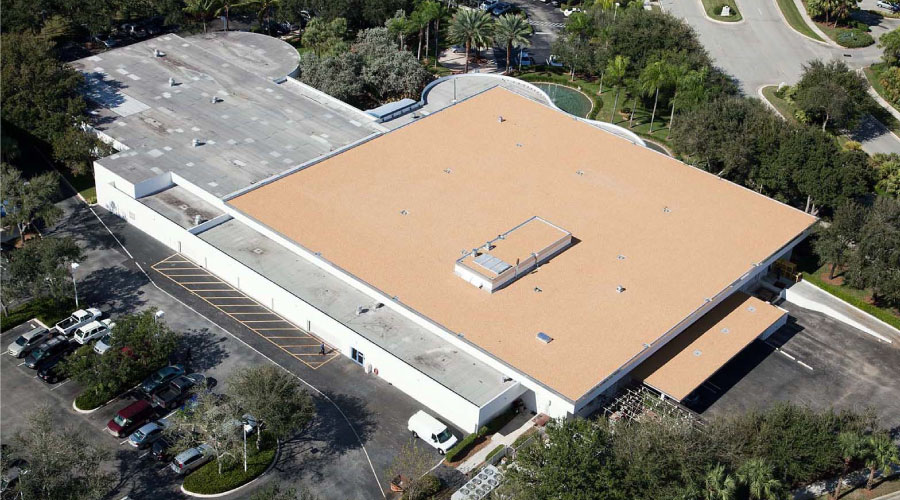Infrared Technology, Coring Popular Roof Conditioning Techniques
When water intrusion signs are present, managers can consider the use of two excellent techniques workers can use to verify the condition under the roof membrane: coring and infrared technology.
It only takes a few minutes to make a core cutout from the roof, inspect it for water intrusion, and replace and reseal it. The process also provides immediate results. One disadvantage of coring is it only covers the immediate area of the core, so workers need to know the precise location to core for successful results.
Non-contact infrared thermography employs a scanner to investigate larger areas. Scanners use infrared light frequencies to detect differences in temperature and convert them to digital readouts and color images of temperature. Blue indicates lower temperatures, or possible moisture within the roof, while red indicates warmer temperatures, or normal, dry conditions.
Because of this potential for hidden water intrusion, each roof assessment should include a close inspection of interior walls and ceilings, as well as windows, to uncover damp spots well before visible damage appears on the exterior of the roof.
One proven step to minimize water problems on rooftops is flushing downspouts to keep them free of debris buildup. Partial buildup of leaves and branches can cause a backup of water that is hard to see because as soon as the rain stops, the downspout drains, and workers do not know a problem even exists.
The situation can be especially damaging if, instead of tearing off the old roof, the current roof was installed over it. In reroofing, water can get under the new roof and disappears down into the old roof, only to reveal itself months later inside after many gallons of water have penetrated into the building behind ceilings and walls. By then, extensive interior wall and ceiling damage might have occurred.
Making Assessments Work
Building owners pay for annual assessments, which are a requirement to maintain the warranty. Whether contracted out or done in-house, assessments must be performed by an approved, certified roof inspector, and the facility must maintain a record and photos of rooftop repairs and other activities. Records should also include: repair material and labor costs; repair time, especially occurrences of emergency repair during storms producing leaks; and the cost of product damage and building damage repairs.
Many of these repairs are not covered by either the roof warranty — which usually covers only the roof repair, not other losses — or insurance. The facility still has to pay the deductible. The lowest-cost, least disruptive alternative is finding problem areas as early as possible and fixing them as a part of a comprehensive assessment program before expensive damage occurs.
Roof assessments are done on a combination of fixed and variable schedules. The fixed assessments usually occur twice a year — in spring after colder winter weather is over, and in the fall before cold weather, ice and snow begin. The schedules will depend on the frequency of storms and natural disasters. A careful inspection to look for rooftop changes or damage should follow every major storm.
Related Topics:














